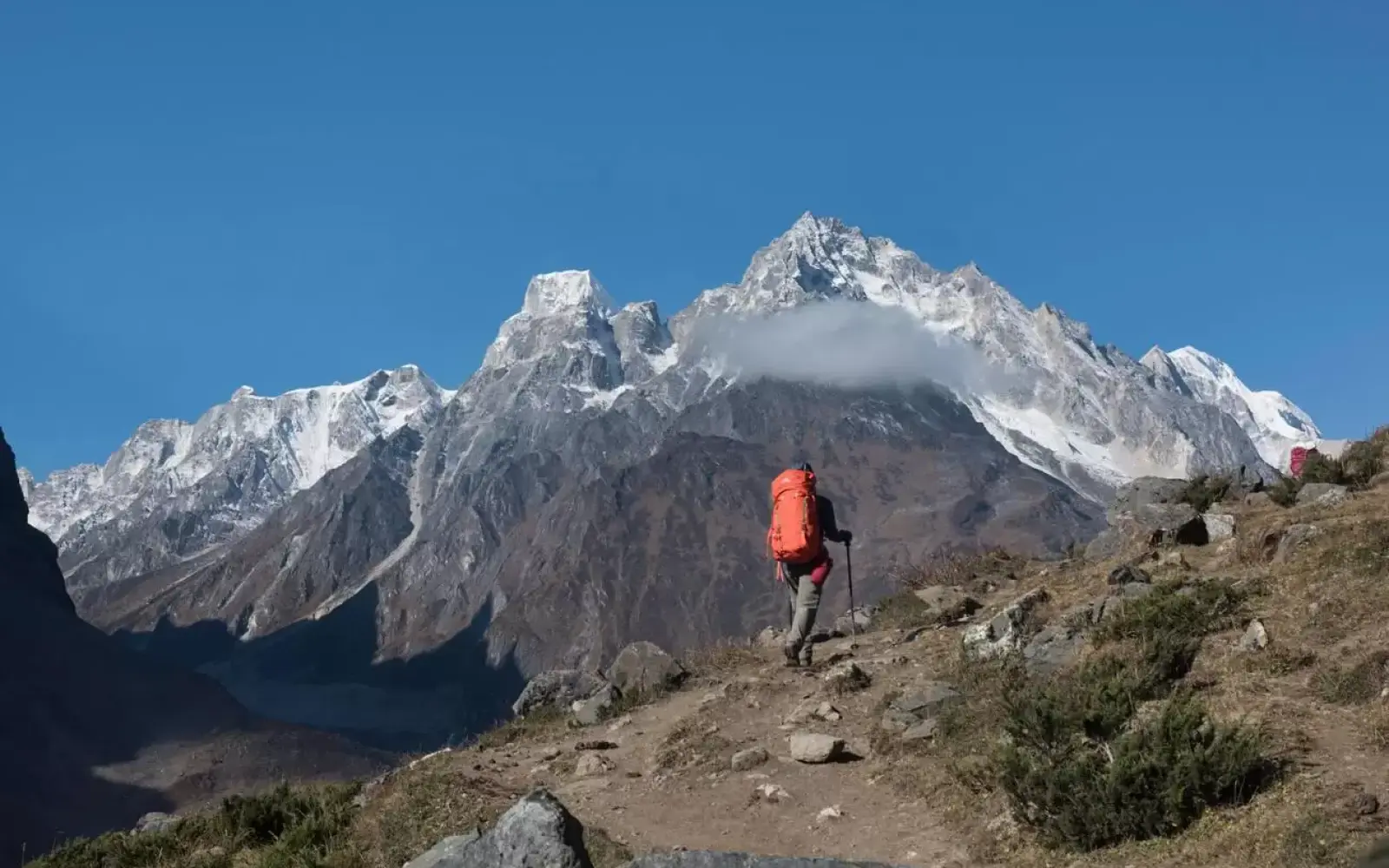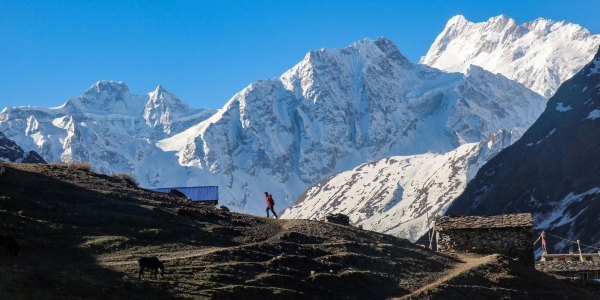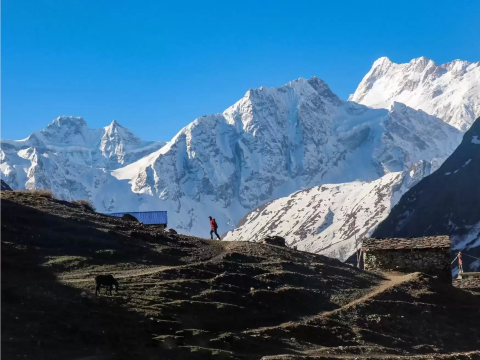Manaslu Circuit Trek: A Tapestry of Heights, Landscapes, and Cultures
Nepal, a haven for trekking enthusiasts, unveils its best-kept secret—the Manaslu Circuit Trek. This...

The Manaslu Circuit Trek is one of Nepal’s most rewarding off-the-beaten-path adventures, winding through remote Himalayan villages, diverse landscapes, and pristine valleys. Unlike the more commercial treks like Everest Base Camp or Annapurna Circuit, the Manaslu Circuit offers a quieter, more culturally immersive experience. Organized by Himalayan Forever Treks, this 12-day journey is carefully curated to ensure your success, safety, and enjoyment while traversing from lush lowlands to the high-altitude Larkya La Pass at 5,160 meters.
Key Trek Facts:
Budget & Cost Insights:
Expect to budget around $1,200 to $1,800 USD for the full trek when booked with Himalayan Forever Treks. This typically includes permits, transport, guides, porters, meals, and accommodation. Budget flexibility is essential to account for extras like hot showers, Wi-Fi, snacks, and tipping your crew.
Success Tips:
Trekking the Manaslu Circuit is a journey into one of Nepal’s most untouched and culturally rich regions. Unlike the crowded trails of the Annapurna or Everest regions, Manaslu offers a sense of solitude and authenticity that has become increasingly rare. Organized with care by Himalayan Forever Treks, the route passes through ancient Tibetan-influenced villages, alpine forests, glacial rivers, and dramatic mountain scenery.
What Sets Manaslu Apart:
The trek offers a chance to reconnect with nature and immerse yourself in the resilient mountain lifestyle. Each village—Jagat, Deng, Namrung, Samagaun—feels like stepping back in time, with stone houses, spinning prayer wheels, and yak caravans still part of daily life. If you're seeking a challenge with deep cultural and natural rewards, this is your trail.
The Manaslu Circuit is located in the Gorkha District of north-central Nepal, near the Tibetan border. The trail circumnavigates Mount Manaslu (8,163m), the world’s 8th highest mountain, and forms a natural loop from the sub-tropical lowlands near Machha Khola (870m) up to the high Himalayas and over the Larkya La Pass (5,160m) before descending into the Annapurna region.
Geographical Highlights:
Access to the region typically begins with a scenic yet rugged 8–9 hour drive from Kathmandu to Machha Khola. Since the area borders Tibet, it is part of a Restricted Region, and trekking is only allowed with a special permit, licensed guide, and a minimum of two trekkers—requirements that Himalayan Forever Treks seamlessly manages.
In short, the Manaslu Circuit offers a microcosm of Nepal's rich topography—from steamy river valleys to towering Himalayan giants—all in one trek.
The Manaslu Circuit Trek typically takes 12 to 14 days, depending on your pace, acclimatization needs, and side trips. With Himalayan Forever Treks, a well-structured 12-day itinerary ensures proper acclimatization and maximizes your experience without rushing. The journey begins with a scenic drive from Kathmandu to Machha Khola, followed by steady ascents through remote mountain villages and across the formidable Larkya La Pass (5,160m) before reconnecting with the Annapurna region.
The trek covers around 177 km (110 miles) in total and includes a diverse range of terrain—from subtropical forest to alpine tundra. The altitude gain is gradual, and key stops like Samagaun and Samdo help your body adapt before tackling the pass.
Standard Itinerary with Himalayan Forever Treks:
Optional Side Trips: Explore the stunning Manaslu Base Camp or Pungyen Gompa during the acclimatization day in Samagaun.
With this structured timeline, Himalayan Forever Treks ensures a balance between challenge and comfort, increasing your success rate and enjoyment of the trek.
Timing your trek is crucial for success, especially on high-altitude routes like the Manaslu Circuit. The best seasons are spring (March to May) and autumn (September to November). These periods offer the most stable weather, clear skies, and safe trail conditions. Choosing the right month enhances your chances of completing the Larkya La Pass crossing safely while enjoying the dramatic Himalayan views.
Season Overview:
With Himalayan Forever Treks, departures are carefully planned around the weather windows, ensuring safety and a high success rate. Their experienced local guides monitor trail and weather conditions daily, offering flexibility in case of sudden changes. For the best combination of views, safety, and trail accessibility, October and April are considered prime months.
The Manaslu region is classified as a Restricted Area by the Nepalese government due to its proximity to the Tibetan border and unique cultural heritage. This means that independent trekking is not allowed, and all trekkers must travel with a licensed trekking agency like Himalayan Forever Treks, accompanied by a registered guide. Additionally, a minimum of two trekkers (excluding the guide) is required to obtain the permits.
Required Permits:
Permits can only be issued through government-authorized companies. Himalayan Forever Treks handles all paperwork, logistics, and coordination to ensure you’re fully compliant with the latest regulations.
Documents Needed:
Failing to carry proper permits may lead to heavy fines, trip cancellations, or being turned away at checkpoints. By booking with Himalayan Forever Treks, you avoid bureaucratic hassles and ensure your trip is legal, safe, and well-managed.
Legal Requirements and Helpful Tips
Yes, hiring a guide is mandatory for the Manaslu Circuit Trek. Since the Manaslu region is designated as a Restricted Area, independent trekking is not allowed. According to Nepal's trekking regulations, trekkers must travel with a licensed guide through a registered trekking agency, and the group must consist of at least two trekkers (excluding the guide). Companies like Himalayan Forever Treks are fully certified and provide experienced, government-licensed guides who understand both the terrain and the local culture.
Having a guide is not just about fulfilling legal requirements—it significantly enhances your experience. Local guides provide deep insights into the region’s history, religion, and customs, and they assist with logistics, safety, and trail navigation. When trekking in remote and high-altitude areas like Manaslu, a guide becomes a crucial partner for dealing with sudden weather changes, injuries, or altitude sickness.
Benefits of Hiring a Guide or Porter:
Porters are not mandatory but highly recommended, especially if you’re not used to hiking with a heavy backpack for multiple days. Himalayan Forever Treks ensures fair wages, insurance, and ethical treatment for all their staff, making your trip more sustainable and responsible.
Where Your Money Goes on the Trail
Trekking the Manaslu Circuit isn’t overly expensive compared to other international adventure trips, but it does involve several cost components. With Himalayan Forever Treks, you get a clear, upfront breakdown of what’s included in your package and where your budget is allocated. On average, the full trek costs between $1,200 and $1,800 USD, depending on group size, travel season, and included services.
1. Permits:
2. Guide and Porter Fees:
3. Accommodation:
4. Food:
5. Transport:
6. Miscellaneous:
Booking with Himalayan Forever Treks usually includes permits, guide, porter, transport, accommodation, and meals in a package, helping you avoid hidden costs.
If you’re not on a fully-inclusive package and plan to pay as you go, your daily budget on the Manaslu Circuit will typically range from $35 to $55 USD per person, depending on your level of comfort and spending habits. This includes meals, accommodation, basic services, and porter/guide wages (if shared across a group). With Himalayan Forever Treks, many of these costs are already bundled into your total fee, offering a hassle-free experience.
At lower altitudes, things are cheaper and more available. As you ascend, everything—from meals to charging your phone—gets more expensive due to the lack of road access and transportation difficulty. Tea houses are reasonably priced, but if you indulge in extras like bottled drinks, snacks, or hot showers, your costs can rise quickly.
Approximate Daily Expenses (Without Package):
If you choose to trek with a company like Himalayan Forever Treks, they offer full-board packages which often include all these essentials, minimizing surprise costs. This is especially valuable in remote areas where prices fluctuate, and cash is the only accepted form of payment. Having a pre-arranged service helps you budget accurately and enjoy your adventure stress-free.
Trekking the Manaslu Circuit with Himalayan Forever Treks offers a premium and hassle-free experience, but it’s still possible to save money without compromising safety or enjoyment. Since this trek goes through remote and restricted areas, some costs are fixed—like permits and guide fees—but other expenses can be optimized with smart choices.
One of the best ways to save money is to travel with a small group to share guide and porter fees. Group trekking reduces individual costs and often allows you to negotiate better rates with tea houses or transport providers. Additionally, booking the trek well in advance with Himalayan Forever Treks can secure early-bird discounts and allow time to prepare for your journey, reducing last-minute expenses.
Budget Travel Hacks:
Despite budget hacks, be realistic—this is a high-altitude trek in a restricted region, so don’t expect to cut corners on essential permits, guides, or safety gear. With Himalayan Forever Treks, your budget travels remain safe, enjoyable, and well-supported.
What to Bring (and What to Leave Behind)
Packing wisely for the Manaslu Circuit is crucial for both comfort and safety. Himalayan weather and trail conditions vary greatly, so your gear must be versatile and lightweight. Avoid overpacking to keep your backpack manageable—remember, your porter or you will carry this for several days.
Start with layering systems: moisture-wicking base layers, insulating mid-layers, and waterproof outer layers. Durable trekking boots with good ankle support and trekking poles will make steep ascents and descents easier. Essential extras include a warm hat, gloves, sunglasses, and a headlamp for evening use. Don’t forget sun protection, lip balm, and a personal first aid kit.
Essential Packing List:
Avoid packing heavy electronics, luxury items, or excessive clothes—weight is your enemy on long treks. With Himalayan Forever Treks, you’ll receive detailed packing advice tailored to your travel dates and expected conditions.
How to Get Ready Physically and Mentally for the Challenge
The Manaslu Circuit Trek demands a good level of physical fitness due to its length, altitude, and rugged terrain. Preparation should begin months before your departure. Focus on cardiovascular fitness with activities like hiking, running, cycling, or swimming to improve endurance. Strength training, especially for legs, core, and back, will help manage heavy backpacks and long uphill climbs. Practice hiking with a loaded backpack to simulate real trail conditions.
Mental preparation is just as vital. High altitude can cause fatigue, headaches, and discomfort. Prepare yourself for long days of walking, unpredictable weather, and basic accommodation. Building resilience and a positive mindset will improve your overall trekking experience. Learn about altitude sickness symptoms and how to handle them—proper acclimatization days, hydration, and listening to your guide from Himalayan Forever Treks will keep you safe.
Preparation Checklist:
By preparing both body and mind, and trekking with Himalayan Forever Treks, you’ll enhance your chance of success, enjoy spectacular scenery, and make memories that last a lifetime.
The Manaslu Circuit is a demanding trek that exposes adventurers to several challenges, including altitude sickness, unpredictable weather, complex logistics, and health issues. One of the most common challenges trekkers face is acute mountain sickness (AMS). The trek reaches elevations above 5,000 meters, and without proper acclimatization, symptoms such as headaches, nausea, dizziness, and fatigue can arise. To prevent AMS, take acclimatization days seriously—like the planned rest in Samagaun—and always listen to your guide’s advice. Himalayan Forever Treks emphasizes gradual altitude gain and close monitoring of all trekkers to minimize risks.
Weather is another major challenge. The Manaslu Circuit passes through various climatic zones, from subtropical forests to alpine highlands. Sudden snowstorms, heavy rain during monsoon, or freezing temperatures can impact your trek. Packing appropriate gear, including waterproof layers and thermal clothing, is essential. Also, be prepared for trail delays caused by landslides or road closures.
Logistically, the trek is more remote than popular routes like Annapurna, meaning fewer services and more rugged infrastructure. Transport options may be limited, and communication can be patchy. Himalayan Forever Treks’ experienced guides handle permits, local transportation, and accommodations efficiently, ensuring your journey goes smoothly.
Overcoming Challenges:
By understanding these challenges and preparing accordingly, you’ll enhance your safety and enjoyment on this magnificent trek.
What’s Available—and What’s Not
Connectivity on the Manaslu Circuit varies greatly depending on your location. At lower altitudes, you can expect basic mobile coverage from Nepalese providers like Ncell and Nepal Telecom. However, once you pass Machha Khola and enter higher elevation areas like Samagaun and beyond, signal strength becomes intermittent or non-existent. Many tea houses offer Wi-Fi services, but these are usually slow, costly ($2–$5 per session), and unreliable, particularly in bad weather.
Electricity availability is limited as well. Some lodges have solar power systems or generators, but the supply is often inconsistent. Charging devices can cost between $1 and $3 per hour, and it’s recommended to carry a portable power bank for backup. For trekkers wanting to stay connected, purchasing a local SIM card with data in Kathmandu before departure is advisable, but don’t expect full coverage throughout the trek.
Regarding finances, there are no ATMs along the Manaslu route. It’s essential to carry enough cash (Nepalese Rupees) to cover all your expenses, including permits, meals, accommodations, tips, and emergencies. Besisahar and Kathmandu are the last places to withdraw cash, so plan accordingly.
Connectivity & Electricity Tips:
With these precautions, you’ll stay connected and powered up while enjoying the natural beauty of Manaslu.
Responsible trekking is key to preserving the pristine environment of the Manaslu Circuit and ensuring safety for yourself and future trekkers. This region’s fragile ecosystems and unique cultural heritage require careful attention to minimize negative impacts. With Himalayan Forever Treks, you benefit from a company committed to sustainable tourism practices that protect the land and empower local communities.
Safety-wise, always follow your guide’s instructions, especially regarding altitude acclimatization and weather warnings. Carry a personal first aid kit, stay hydrated, and communicate any health concerns promptly. Respect local customs and sacred sites—Manaslu is home to many monasteries and culturally sensitive areas.
Environmental responsibility includes avoiding single-use plastics, properly disposing of waste, and sticking to marked trails to prevent erosion. Support local businesses by buying handicrafts, eating locally sourced food, and using community-run accommodations. Himalayan Forever Treks actively promotes fair wages for guides and porters, contributing to a better livelihood for locals.
Responsible Trekking Practices:
By trekking responsibly, you help maintain Manaslu’s natural beauty and cultural richness for generations to come.
Practical Advice from Experienced Trekkers
After weeks of trekking preparation, knowledge, and effort, some practical advice can make the difference between a good trek and a great one. Experienced trekkers who have walked the Manaslu Circuit with Himalayan Forever Treks recommend pacing yourself and not rushing the acclimatization process. Listen to your body and your guide, and don’t ignore symptoms of altitude sickness. Staying flexible with your itinerary can also help in case of weather or trail delays.
Hydration is critical; drink at least 3–4 liters of water daily, and consider electrolyte supplements. Sleep well, eat nutritious meals, and keep warm during cold nights. Bring snacks like nuts, energy bars, and dried fruits for quick boosts. Layer your clothing and carry rain protection.
Engage with locals respectfully, learn about their culture, and immerse yourself in the unique landscape and spirituality of the Manaslu region. Having the right gear, a positive mindset, and a reliable trekking company like Himalayan Forever Treks can transform your journey into an unforgettable adventure.
Final Success Tips:
With these tips and the support of Himalayan Forever Treks, your Manaslu Circuit trek will be a rewarding and life-changing experience.

Nepal, a haven for trekking enthusiasts, unveils its best-kept secret—the Manaslu Circuit Trek. This...

Nestled in the heart of the Himalayas, the Manaslu and Tsum valley Trek offers an unparalleled journ...

The Manaslu Circuit Trek is an off-the-beaten-path adventure that offers breathtaking views, rich cu...
